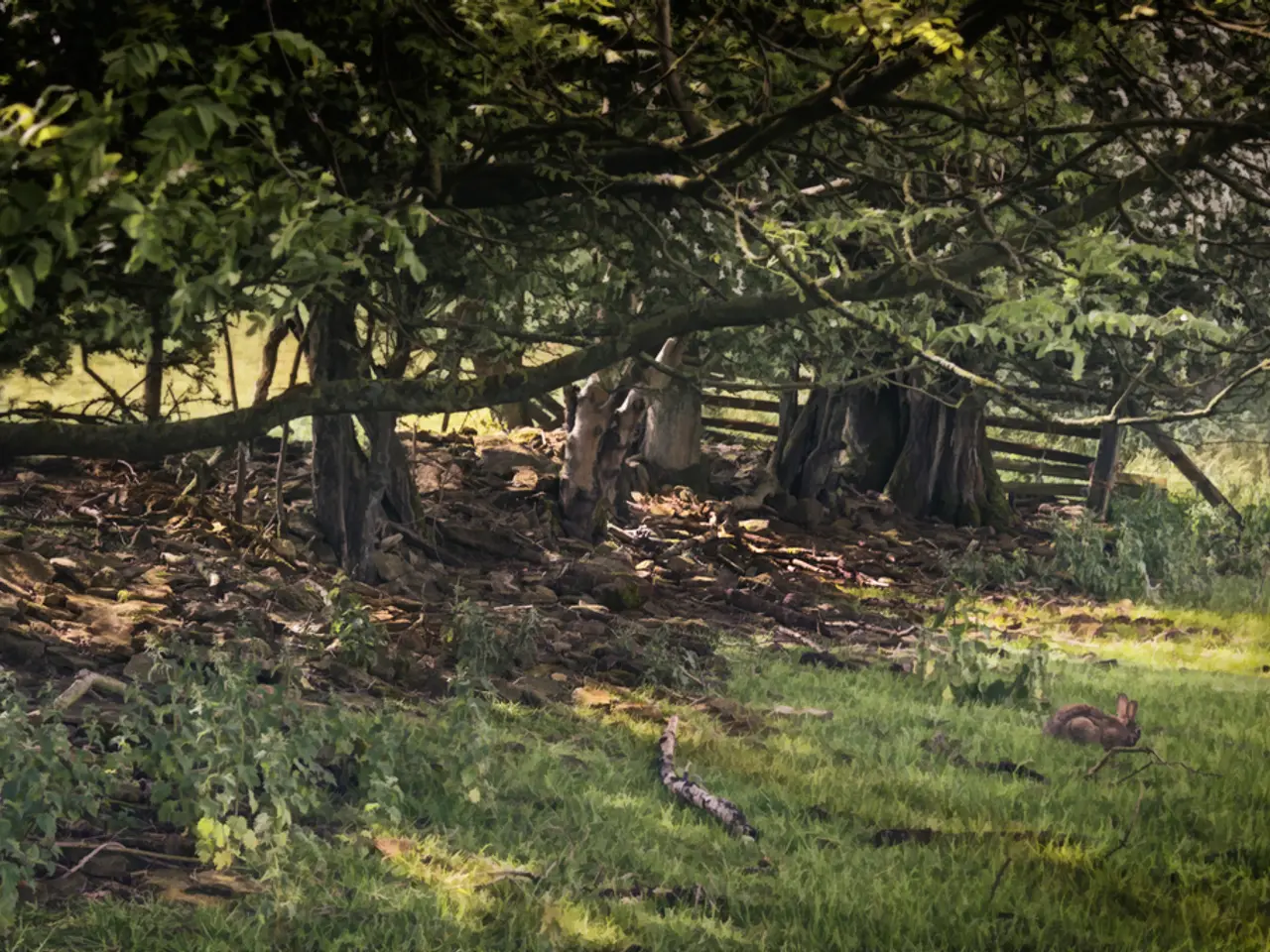Managing invasive species: A guide to controlling couch grass
In the battle against persistent weeds, one common garden pest stands out - couch grass, also known as quackgrass. This clump-forming perennial grass can be found in lawns, freshly dug soil, and even infesting vegetable and flower beds. Here are some organic methods to help control this tenacious weed.
Firstly, physical removal is essential. Couch grass spreads via strong rhizomes, so hand digging requires careful effort. Use a garden fork to deeply loosen soil around the couch grass clumps and gently lift out every rhizome or stolon. Any small fragment left behind can regrow, so thoroughness is key.
Secondly, smothering and mulching can be effective. Cover the soil with thick layers of organic mulch, which suppresses weed growth by blocking sunlight. Using brown cardboard or newspaper (15-25 layers) as a weed barrier beneath mulch can prevent couch grass emergence. These materials also contribute to soil health, but ensure adequate watering for desired plants.
Creating physical barriers can also help. Install a weed barrier border about a foot deep around garden beds to prevent rhizomatous grasses like couch grass from infiltrating. Materials such as recycled sheet metal or garage door panels can serve as durable, non-toxic barriers.
Dense planting schemes, like the Square Foot Garden method, can reduce open soil areas where couch grass can establish. Denser plant coverage shades the soil and limits weed growth.
Organic herbicides can be a supplementary tool but should not be relied on exclusively. Some organic-approved products, like those containing vinegar or OMRI-listed brands, can be used cautiously. They work by quickly desiccating exposed parts of the plant but do not always fully eliminate deep-rooted grasses like couch grass and may require repeated applications. Be aware they are non-selective and may harm desired plants if contacted.
Lastly, couch grass can be controlled organically by lifting plants in permanently planted borders to tease out couch grass from rootballs. This method is particularly effective at the edges of infested lawns.
In summary, the best organic approach combines vigilant manual removal of rhizomes, consistent mulching and soil coverage, physical root barriers, and maintaining dense, healthy plant growth to crowd out couch grass in vegetable beds and flower gardens. Organic herbicides can be a supplementary tool but should not be relied on exclusively given couch grass’s persistence.
For more specific product recommendations or detailed techniques for your garden's size and conditions, feel free to ask. It's important to remember that controlling couch grass requires patience and persistence, but with these organic methods, you can keep your garden free from this persistent pest.
Additional notes: Couch grass can be easily spread by cultivation, and it can creep from lawns to infest flower and vegetable beds. Regular slashing with a sharp knife can weaken and loosen the plant, making it easier to remove. Couch grass can also be found in established flowerbeds, borders edging lawns, and even in cracks in paving. A systemic weedkiller can be used to control couch grass in the spring, and re-application throughout the growing season at regular intervals is necessary.
Maintaining a dense planting scheme, similar to the Square Foot Garden method, can help reduce open soil areas where couch grass can establish, thereby hindering its growth. Additionally, careful gardening practices such as smothering and mulching using organic materials, hand digging with a garden fork to loosen and remove couch grass clumps, and installing physical barriers around garden beds can help control couch grass effectively.




